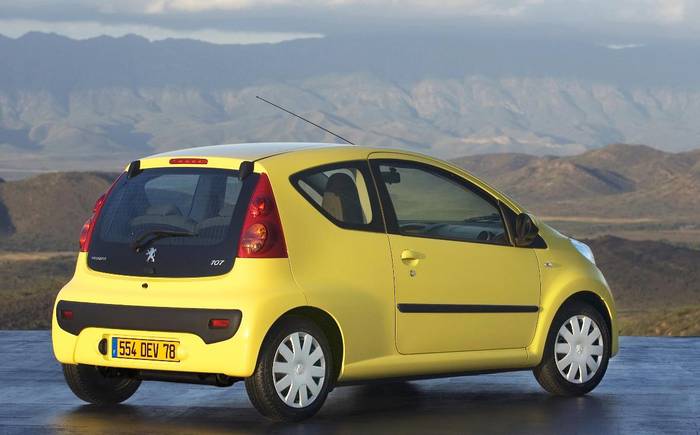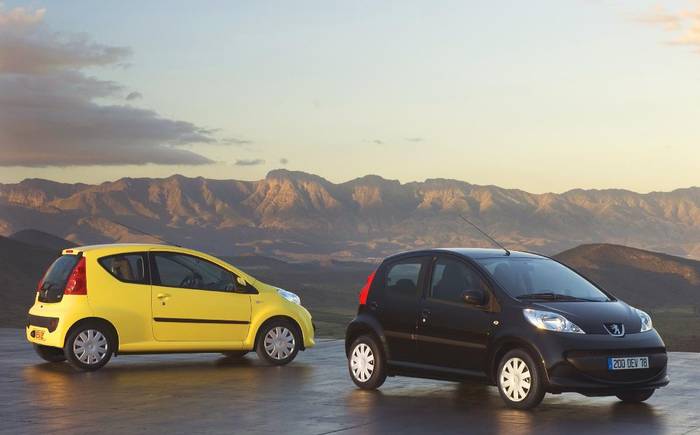Peugeot 107 review (2005-2014)
Small but (almost) perfectly formed

What is the Peugeot 107?
If ever you wanted proof that less is more, the Peugeot 107 is it. It has an engine that displaces all of one litre across just three cylinders but thanks to its light weight and consequent agility, the 107 is much more fun than you’d expect. Sure, you have to work that three-pot engine to make progress but the thrum that it produces is one of the things that makes the baby Pug so endearing.
We got our first glimpse of the 107 when it arrived in June 2005, alongside the Citroën C1 and Toyota Aygo; all three cars were built on the same production line. From the outset there’s been just a 1-litre engine. European buyers got a diesel, too, but not those in the UK. There’s always been a choice of three or five doors, manual or auto gearboxes. Both have five ratios but the auto (dubbed 2-Tronic by Peugeot) is an acquired taste.
Search for and buy a used Peugeot 107
Aimed largely at those wanting the cheapest possible transport, many 107s feature a minimum of equipment, which is why you should avoid entry-level models. Many 107s don’t feature air conditioning – something you really need. Entry-level cars also forego head restraints in the rear and while the back seats are cramped, if you’re planning to use them to carry people, they really ought to get a restraint each. We’d also avoid early cars where possible; newer ones are better built and tend to be better equipped.

Peugeot facelifted the 107 in January 2009, then again three years later. Each time there were cosmetic changes and extra standard kit, so we’d go for the newest, highest-spec car you can afford. Post-2011 cars come with free road tax; the 107 was initially rated at 109g/km, then 106g/km from 2009, then 99g/km from 2012.
If you reckon that despite our eulogising the 107 really isn’t for you, there are some great alternatives. One of the most talented is the Kia Picanto Mk 2 that arrived in spring 2011. Small, well-equipped and with a big-car feel that the 107 can’t match, the Picanto is a brilliant city car. Equally impressive is the Seat Mii/Skoda Citigo/Volkswagen Up trio, which also feel bigger than they are, offer superb refinement and are very safe. If you prefer something more basic but still fun, check out the Fiat Panda, which is much more practical than the 107 but still not over-endowed with equipment, so it’s cheap and light.
What to look out for when buying a used Peugeot 107
Build quality isn’t the 107’s forté; this is a car that’s built down to a price. However, the car’s simplicity helps with reliability as there’s not much to go wrong. You still need to check for water in the boot, though, as the door, light and aerial seals can all fail. So,too, can the rear wheel brake cylinders and exhaust back boxes. Clutches can also fail prematurely because of water getting into the bell housing. While this might sound like a catalogue of issues, most cars aren’t afflicted by many problems and fixing things is usually cheap – and newer cars are better developed, too. Since it arrived, the Peugeot 107 has been the subject of recalls for the possibility of the wheel studs working loose, the accelerator failing to return properly, the suspension failing and the engine self-destructing, and most recently, for the failure of a rear suspension cross-member.
The one to buy
Peugeot 107 Allure
Specifications
Engine:
- 998cc, 3 cylinders
- Power:
- 68bhp @ 6000rpm
- Torque:
- 70 lb ft @ 3600rpm
- Transmission:
- 5-speed manual/auto
- Acceleration:
- 0-62mph in 12.3sec
- Top speed:
- 98mph
- Fuel:
- 65.7mpg
- CO2:
- 99g/km
- Road tax band:
- A
- Dimensions:
- L 3420mm, W 1630mm, H 1470mm
Peugeot 107 rivals
Fiat Panda (click here for used prices on driving.co.uk)
Kia Picanto (click here for used prices on driving.co.uk)
Volkswagen Up! (click here for used prices on driving.co.uk)




